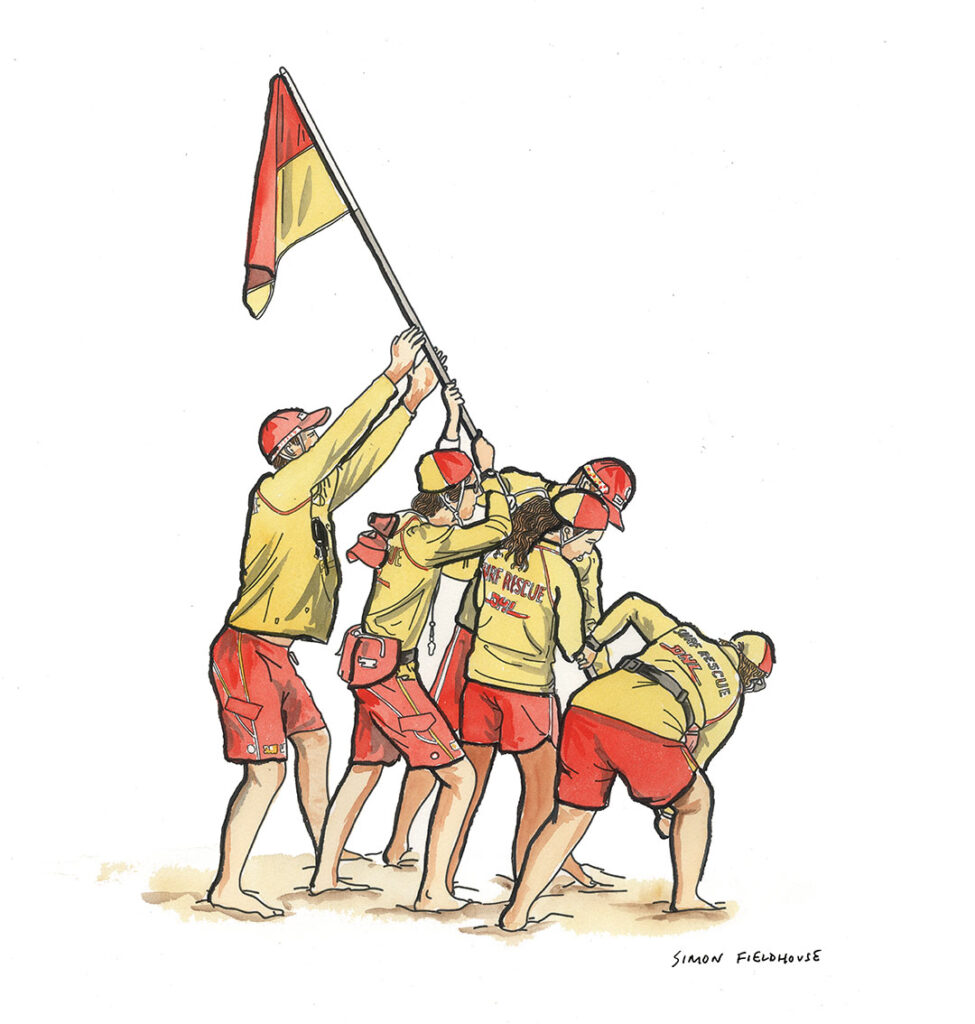
Surf Rescue - Australia
Surf Rescue at Australian Beaches. Australia is renowned for its stunning coastline, which attracts locals and tourists alike to its pristine beaches. However, the beauty and allure of these beaches often come with the inherent risk of powerful surf and rip currents. Surf rescue operations at Australian beaches play a vital role in ensuring the safety of beachgoers, preventing drowning incidents, and offering a sense of security to those who enjoy the sun and surf.
One of the most significant aspects of surf rescue in Australia is the dedication and skill of surf lifesavers. These heroes are often volunteers who commit their time and effort to safeguard beachgoers. With training in first aid, water safety, and rescue techniques, they are well-prepared to respond to emergencies swiftly. They undergo rigorous physical and theoretical training, making them highly capable of navigating the challenging coastal conditions.
In addition to surf lifesavers, surf rescue organizations operate a wide range of equipment to enhance their lifesaving efforts. One of the most iconic tools is the rescue board, a floating platform that enables lifesavers to reach swimmers in distress efficiently. Inflatable rescue boats (IRBs) and jet skis are also widely used to cover large stretches of coastline, while helicopters are employed for aerial surveillance and rescue missions. These resources ensure a comprehensive approach to surf rescue, covering different types of incidents and terrains.
A fundamental element of surf rescue at Australian beaches is the constant vigilance and surveillance maintained by lifesavers. They scan the ocean for any signs of danger, such as rip currents, strong waves, or distressed swimmers. These watchful eyes, often perched in elevated lifeguard towers, are crucial for early detection and swift response to potential emergencies. Moreover, they educate beachgoers about water safety, including the importance of swimming between the flags, which are designated safe zones.
The effectiveness of surf rescue at Australian beaches is further enhanced by strong community involvement. Local residents often take great pride in their coastal communities and play an active role in promoting water safety. Beachgoers are encouraged to adhere to the guidelines set by surf rescue organizations and to report any hazards or incidents promptly. This sense of community responsibility fosters a safer beach environment for everyone.
In conclusion, surf rescue at Australian beaches is an integral part of the nation's beach culture, driven by dedicated surf lifesavers, a range of specialized equipment, vigilant surveillance, and community involvement. These efforts are not only essential for preventing drowning incidents but also for ensuring that locals and tourists can enjoy the stunning Australian coastline with peace of mind. The commitment of these surf rescue organizations and their volunteers ensures that the nation's iconic beaches remain safe and welcoming for all who wish to experience their natural beauty.
The birth of surf lifesaving in Australia can be attributed to the tragic drownings that were occurring along the New South Wales coast in the late 19th century. The danger of powerful surf and rip currents became evident, and a need arose to find a way to prevent these tragedies. The first surf lifesaving club, known as the "Bondi Surf Bathers' Life Saving Club," was established at Bondi Beach in 1906. This event marked the beginning of a formalized approach to surf rescue in Australia.
These early surf lifesaving clubs were established with a clear mission: to prevent drownings and rescue swimmers in distress. They began to develop various techniques and equipment for this purpose. The iconic surf reel, which was invented by Lyster Ormsby, allowed lifesavers to send a line and buoy to stranded swimmers, pulling them to safety. This innovation significantly improved the effectiveness of surf rescue operations.
As the popularity of beach activities grew, so did the need for more surf lifesaving clubs. The movement expanded to other Australian states, and by 1915, the Surf Life Saving Association of Australia (SLSA) was formed, providing a unified governing body to oversee the various clubs' activities and competitions. The SLSA established standardized training programs and safety protocols, ensuring that all lifesavers were well-prepared for their roles.
World War I and World War II had a significant impact on surf lifesaving in Australia. Many surf lifesavers enlisted in the military, and the clubs played a crucial role in wartime efforts, contributing to patrols and coastal defenses. After the wars, surf lifesaving experienced a resurgence, with many returning servicemen rejoining the movement.
Over the years, surf rescue in Australia has continued to evolve. The use of technology, such as motorized inflatable rescue boats (IRBs), helicopters, and drones, has become integral to the modern surf lifesaver's toolkit. These advancements have significantly improved the efficiency and reach of surf rescue operations.
Today, surf lifesaving is deeply ingrained in Australian culture, and it continues to thrive. It not only saves lives but also promotes water safety education and encourages an active, healthy lifestyle. Surf lifesaving competitions, which include events like surfboat racing, beach sprints, and ironman challenges, are a popular aspect of this culture and showcase the skills and physical fitness of lifesavers.
In summary, the history of surf rescue at Australian beaches is a testament to the nation's commitment to preserving life and ensuring the safety of its beachgoers. It has evolved from a response to tragic drownings into a sophisticated and multifaceted movement that combines tradition, community spirit, and modern technology to protect the coastline and save lives.